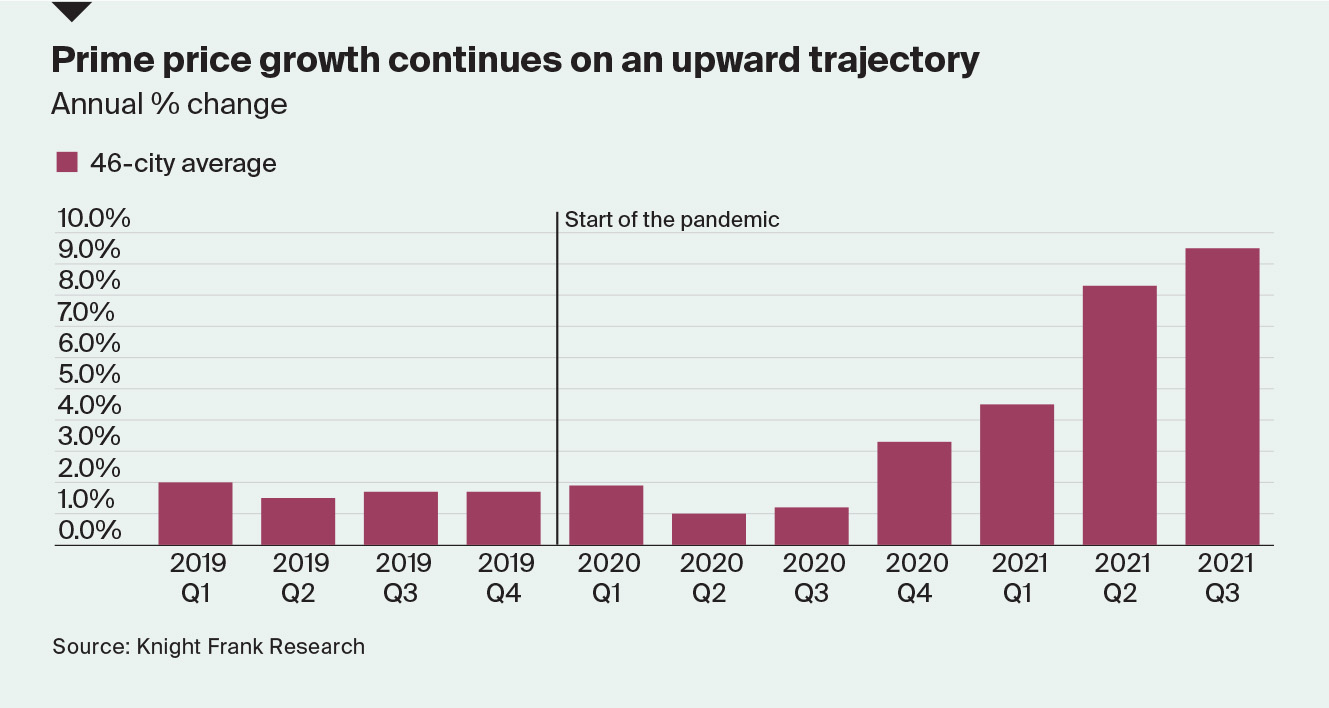A big day at COP26, the new way of working, and why Miami leads the world for house price growth
Making sense of the latest trends in property and economics from around the globe.
4 minutes to read
COP26 update
Tomorrow is “built environment day” at the COP26 conference and is an opportunity for sustainable development organisations to press home the urgency of meaningfully cutting into the colossal carbon emissions from our sector.
The world’s building stock is expected to double in size by 2060, with almost 70% of the global population is projected to live in urban areas, according to the #BuildingtoCOP26 coalition, which is organising the day and includes the UK Green Building Council. The group estimates that less than $3 of every $100 spent on new construction goes to efficient buildings and out of the 186 countries that have submitted Nationally Determined Contributions (NDCs), most do not include full building decarbonisation targets.
The group is seeking to convince all nations to include full building decarbonisation targets in their NDCs. Other goals include coaxing commitments to the UN’s Race to Zero from 1,000 cities and at least 20% of the largest built environment businesses by revenue.
For more on COP26, see Flora Harley’s new note this morning on what’s happened so far. On a related theme, I recommend Stephen Springham on the retail industry’s confused approach to the climate crisis.
The new world of work
A new paper from researchers at the Bank of England and the universities of Nottingham and Stanford predicts that demand for office space is likely to fall about 9% as a result of the pandemic.
The research is based on responses from the Bank of England’s Decision Maker Panel of around 3,000 UK companies. In 2019, that panel estimated that around 7% of the hours that their employees worked were from home. At the height of the pandemic, this share was as high as 60%. As of September that had fallen to 27% and is expected to settle at 20% over the medium term - a big moderation but still about a three-fold increase compared to pre-pandemic norms.
The expected use of office space is expected to fall (in terms of square footage) by 9%, while use of retail space is expected to be around 1% lower, with storage space increasing by around 2%. The theory is that for every 10% of extra hours worked from home, 3.1% less office space is expected to be used and investment in land and buildings will be 2.1% lower.
For the most up-to-date picture on how all this is impacting the capital, see the new London Office Market report. The market continues to recover and take-up is now 12.4% below the long-run quarterly average of 3 million square feet.
Global house prices
You might have thought it was over by now, but no prime house price growth across the world’s cities continues to accelerate. Our Prime Global Cities Index, based on price performance of prime stock in 46 cities, surged by 9.5% in the year to September, up from the 8.3% recorded in June.
Some 85% of cities saw prices rise on an annual basis, up from 76% last quarter, and 16 cities (35%) saw prices increase by more than 10% during the 12-month period.
Miami (26.4%) leads the index this quarter for the first time since the index started in 2007. The hunt for larger accommodation, coastal living, and Florida’s low taxes acted as a key draw for a new breed of remote workers in the US.
Amongst the 15 cities that saw their annual rate of growth decline in Q3 compared to the previous quarter are the four Chinese mainland cities we track: Shanghai, Beijing, Guangzhou and Shenzhen as well as Toronto and Vancouver.

Housebuilding
Trading updates from Persimmon and Vistry reveal the strength of the new homes market. Reservation rates at Persimmon remain 16% above 2019 levels and Vistry’s forward sales position just hit £3 billion.
Vistry said it has continued to see pressure across the building materials supply chain, resulting in extended lead times, however there are now some signs of improvement. That tallies with the IHS Markit Purchasing Managers Index published last Friday.
Persimmon said that trading is now beginning to follow a more typical seasonal pattern, which is in line with our view that house price growth will moderate.
In other news…
Chris Druce with a roundup of this month’s key UK market data: spoiler - residential property market shrugs off end of stamp duty holiday.
Ryan Richards on why the care home sector is showing signs of recovery.
Will Matthews on the key economic and financial metrics for property investment sectors.
Elsewhere - materials firms facing Grenfell tax (Times), Bill Ackman tries to win neighbours’ support for glass NYC penthouse (FT), UK green funds attract record retail inflows (FT), and finally, the UK recovery is stalling not soaring (National Institute for Economic and Social Research).